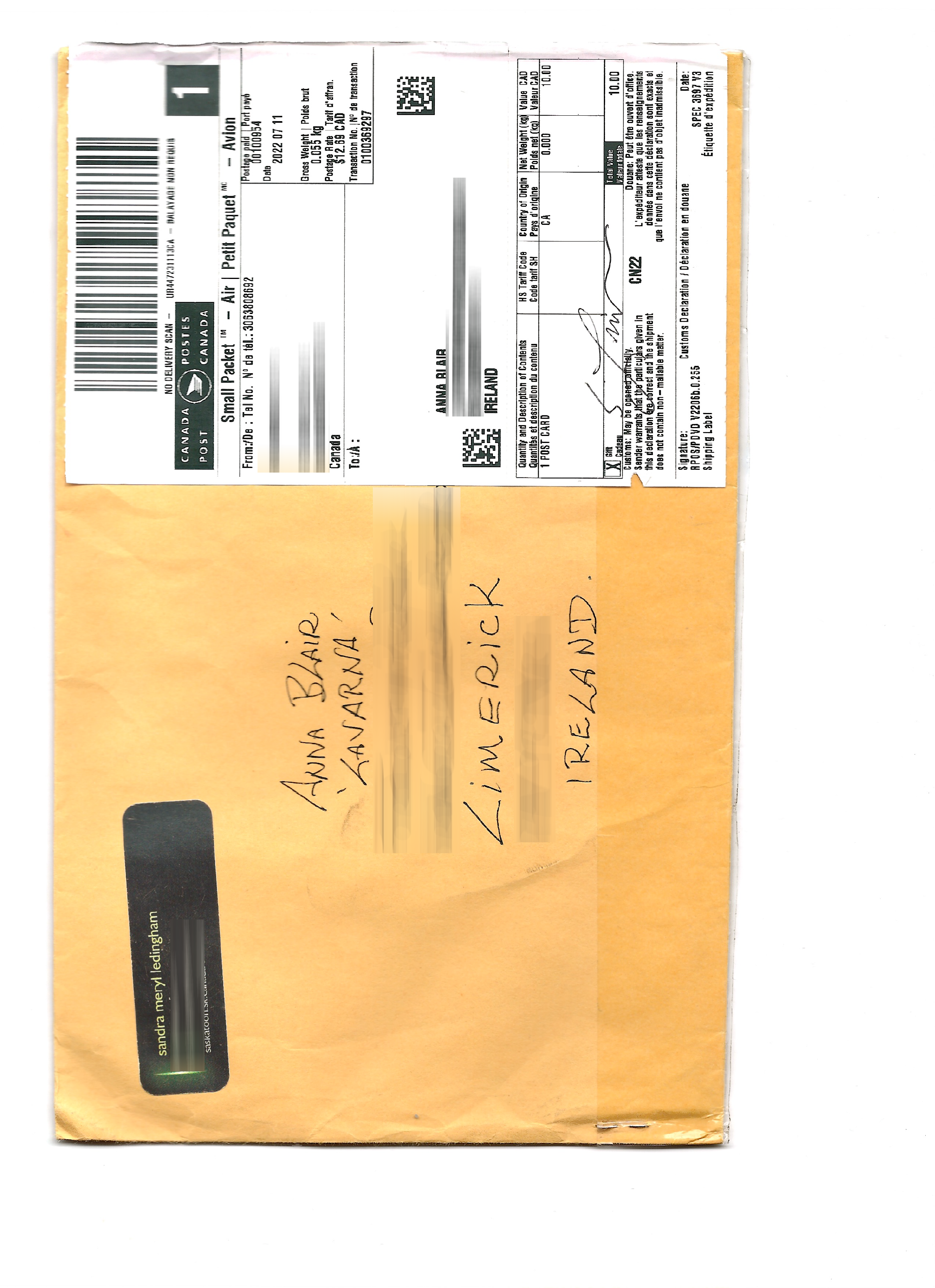Distance as Object set out to establish interpersonal communication between strangers across the same latitude line, using the medium of the global postal service. The card bearing a scan of the artist’s foot set off from Utrecht, and from there was supposed to travel to Berlin, Warsaw, Irkutsk, Atka, Saskatoon, and Limerick, before completing its circumnavigation of the globe back in the Netherlands. In its travel the card became a physical representation of distance, time, and care, with each port of call and each postal agent, adding fingerprint, crease, envelope and stamp to the growing collection of postal materials enveloping the work.
However, Distance as Object encountered opposition at the Polish border when the unlawful invasion of Ukraine by Russia resulted in a halt of all postal communications towards Russia. After two attempts to send the work to Irkutsk, it was decided to skip this port and send the card directly from Warsaw to Atka. The work arrived safely back in Utrecht after 6 months of travel, missing a stamp from the Russian post. Distance as Object shows how mail art has the power to absorb and reflect the social and political conflicts of its time. The absence of the postal stamp bears a grim reminder of the postcards proximity to war.
“This border incident, the encounter between Stef Veldhuis’ Distance as Object and the Polish border, is woven into the materiality and meaning of the work. [...] Stef’s foot took on extra cultural value in its unexpected encounters, as well as the burden of war. While the artwork was slowly accruing meaning and weight in each port of call, the war was building in extremity, causing untold harm to Ukrainians. As an object of solidarity, it has strong links with mail art that was testing the boundaries of oppression more than fifty years ago, a dimension of political time exposed in the polite rejection by a Poczta Polska teller.” - “The Border Incident”, Maia Kenney (Tubelight 2022)
//
Distance as Object owes its existence to the care and enthusiasm of Maartje Eijlander, Sandra Ledingham, Anna Blair, Agata Zborowska, Lucille Smagge, and Natalia Goncharenko. The work was conceived in collaboration with Maia Kenney
However, Distance as Object encountered opposition at the Polish border when the unlawful invasion of Ukraine by Russia resulted in a halt of all postal communications towards Russia. After two attempts to send the work to Irkutsk, it was decided to skip this port and send the card directly from Warsaw to Atka. The work arrived safely back in Utrecht after 6 months of travel, missing a stamp from the Russian post. Distance as Object shows how mail art has the power to absorb and reflect the social and political conflicts of its time. The absence of the postal stamp bears a grim reminder of the postcards proximity to war.
“This border incident, the encounter between Stef Veldhuis’ Distance as Object and the Polish border, is woven into the materiality and meaning of the work. [...] Stef’s foot took on extra cultural value in its unexpected encounters, as well as the burden of war. While the artwork was slowly accruing meaning and weight in each port of call, the war was building in extremity, causing untold harm to Ukrainians. As an object of solidarity, it has strong links with mail art that was testing the boundaries of oppression more than fifty years ago, a dimension of political time exposed in the polite rejection by a Poczta Polska teller.” - “The Border Incident”, Maia Kenney (Tubelight 2022)
//
Distance as Object owes its existence to the care and enthusiasm of Maartje Eijlander, Sandra Ledingham, Anna Blair, Agata Zborowska, Lucille Smagge, and Natalia Goncharenko. The work was conceived in collaboration with Maia Kenney






